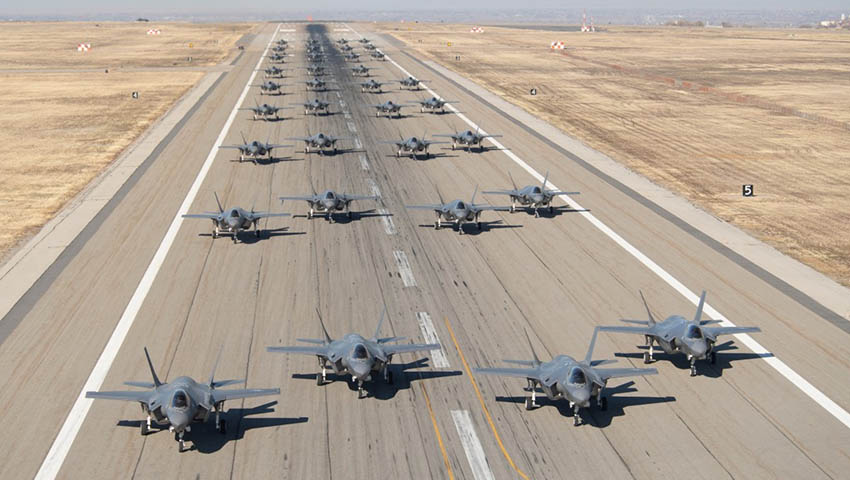The US Air Force has unveiled the rapid deployment capability of the F-35 at a major tactical and support exercise in Utah. The first-ever F-35 ‘elephant walk’ comes on the back of a fortnight of tactical, operational and maintenance milestones for Australia’s future fighter.
To continue reading the rest of this article, please log in.
Create free account to get unlimited news articles and more!
In a major operational milestone for the troubled F-35, the US Air Force 388th and 419th Fighter Wings stationed at Hill Air Force Base, Utah conducted a series of high-tempo training operations to showcase the increasing operational readiness of the fifth-generation platform, its pilots and supporting air crews.
The two wings, totalling 35 'A' variant of the F-35, are the only combat-ready F-35 units in the US Air Force.
Major Caleb Guthmann, 34th Fighter Squadron Assistant Director of Operations and Exercise Project Officer, said, "We are ready to fight tonight, and exercising with multiple squadrons of F-35s can demonstrate our ability to defeat potential adversaries wherever they may arise."
As part of the exercise, the wings conducted a series of sorties, which included launching all 35 F-35As into the air within 11 minutes, highlighting the capacity for the contentious aircraft to meet the high-tempo operational standard the US Air Force expects from its fighter wings.
Both the 388th and 419th wings fly between 30 and 60 sorties per day from Hill’s flight line. During the exercise, they launched roughly the same number of sorties and aircraft took off in 20- to 40-second intervals, while the final exercise saw nearly 150 sorties generated in two weeks on top of normal flying operations.
The exercise also provided the units with the opportunity to focus on combat operations and tactical scenarios, including aircraft battle damage, downed-pilot recovery and fighting in an environment with limited or no communications.
The 388th Fighter Wing Public Affairs Office said, "The exercise aims to confirm their ability to quickly employ a large force of jets against air and ground targets, and demonstrate the readiness and lethality of the F-35."
In support of the tactical scenarios conducted, the exercises conducted at Hill AFB provided an opportunity for maintainers and ground crew to conduct training of their own, focused largely on loading various munitions, working longer shifts and preparing aircraft sorties late into the evening, under a range of conditions.
As part of the training operation, the units also operated and launched jets from alternate locations and ran operations out of a secure deployable facility that houses mission planning, debrief, intelligence and the Autonomic Logistics Information System, or ALIS, a program designed to help with operations, maintenance and planning.
The Blended Operational Lightning Technicians (BOLT) program provided opportunities for F-35 maintainers and ground crew to streamline maintenance and cut down on the man hours it takes to generate sorties.
As part of the BOLT program, maintenance specialties were blended into two tracks:
- Air Vehicle Track: Included crew chiefs, fuels and low observable technicians; and
- Mission Systems Track: Included crew focused on on avionics, weapons, and egress.
Second Lieutenant Daniel Parkhill, officer in charge of the BOLT program, said in a statement: "If a program like this is going to work on any aircraft, it would be the F-35. We can do almost all our maintenance ‘in the shadow’ of the aircraft."
Reducing the size of the maintenance force also allows commanders more combat flexibility for quickly deploying a small number of aircraft to a remote airfield with a smaller logistics support network.

 Login
Login







